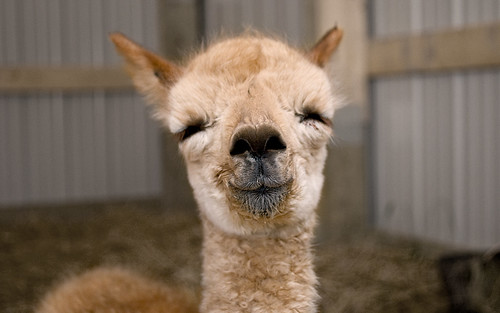Welcome to Word Buzz Wednesday, in which we round up our favorite buzzworthy words of the week. The latest: the science behind smiles; a non-mythical unicorn; and hooking users with cat videos.
disease model
“Besides using cloning technologies to improve livestock breeding, the new cloning factory, will be ‘the world’s only’ research institution to produce ‘disease models’ of large animals, Xu said.”
Zheping Huang, “China plans to clone everything from beef cattle to the family dog in this giant factory,” Quartz, November 23, 2015
A disease model is an animal that has been genetically engineered “to be predisposed to a certain human disease for research purposes.” For example, mouse models have been used to study a host of diseases, including Parkinson’s, Huntington’s, and Alzheimer’s.
Duchenne smile
“Between two and six months, infants increasingly employ a so-called Duchenne smile—cheeks raised, eye muscles constricted—to respond to parents’ smiles, which researchers say indicates intense emotion.”
Melinda Beck, “What Your Baby’s Smile Can Tell You About Her Development,” The Wall Street Journal, November 23, 2015
The Duchenne smile is named for 19th century French physician Guillaume Duchenne, who studied facial expressions and found that while control of the zygomatic major, the muscles that raise the corners of the mouth, is voluntary, the contraction of the orbicularis oculi, those around the eyes, is involuntary.
Thus, Duchenne concluded that only “the ‘sweet emotions of the soul’ force the orbicularis oculi to contract,” and that “its inertia, in smiling…unmasks a false friend.”
Frankenfish
“While regulators maintain that they’re sure the fish is safe to eat, the salmon— which was dubbed ‘Frankenfish’ by its critics — has drawn much contention along its swim to approval.”
Becca Stanek, “For the first time ever, the FDA has approved eating a genetically modified animal: A fast-growing salmon,” The Week, November 19, 2015
Frankenfish plays off the general slang term for genetically modified food, Frankenfood, which originated in the early 1990s, says the Oxford English Dictionary. The Franken– prefix comes from Mary Shelley’s Frankenstein, in which Victor Frankenstein creates his “monster” through an “ambiguous method consisting of chemistry and alchemy.”
narwhal
“And unlike unicorns, narwhals, a type of toothed whales, actually exist.”
Alice Truong, “Canadian tech unicorns are called ‘narwhals,’” Quartz, November 20, 2015
In the startup world, a unicorn refers to company valued at $1 billion or more. Originally a rare occurrence — hence, the equating with the mythological, much sought after creature — unicorns are becoming more common.
The CEO of an advisory firm in Vancouver coined the term narwhal to refer to such a startup in Canada. The narwhal, sometimes called the sea-unicorn or unicorn fish due to the ivory tusk jutting from its head, can be found in the Arctic waters around Greenland, Russia, and Canada.
The word narwhal comes from the Norwegian or Danish narhval, which comes from Old Norse nāhvalr, where nār means “corpse” — named for the whale’s pale color — and hvalr, “whale.”
variable reward
“With [a slot machine], the longer you’re engaged by variable rewards, the more money you lose. For a tech company in the attention economy, the longer you’re engaged by variable rewards, the more time you spend online, and the more money they make through ad revenue.”
Michael Schulson, “User behaviour,” Aeon, November 24, 2015
A variable reward is like a box of chocolates — you never know what you’re gonna get.
Hence, its appeal. On Facebook, for example, variable rewards might include a cute cat video, a moving news story, or someone’s bragplain post.
The variable reward is the third step in a four-step design model to get online users hooked. Step one is the trigger (whatever catches your attention), step two the action (the act of scrolling or clicking) which leads to the variable reward, and step four is making an investment such as Liking or sharing a post.
